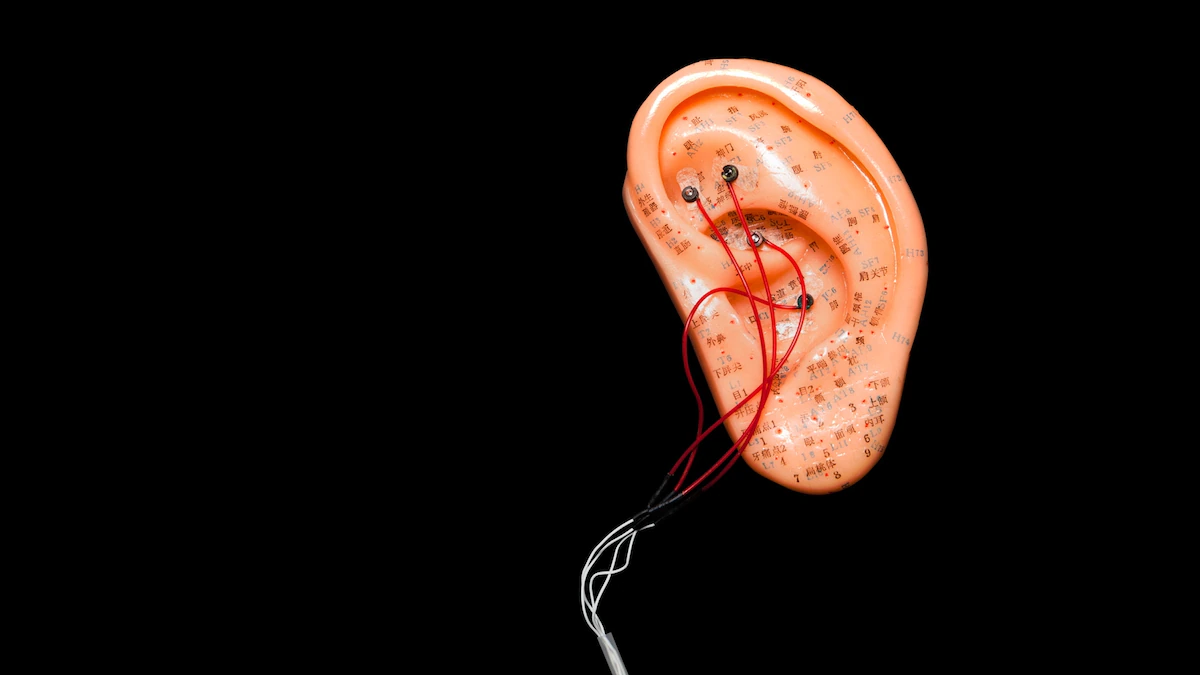Copyright National Geographic

Can you really calm your nervous system with a tiny jolt of electricity? That’s the promise behind a new wave of wellness gadgets designed to stimulate the vagus nerve, which helps the body regulate stress, digestion, and mood. On social media, users say they are a “life changer” and that daily use helps them “sleep through the night,” and “get out of a panic attack in 20 seconds.” The concept sounds futuristic, but it’s grounded in decades of neuroscience. Early versions of vagus nerve stimulators were used in hospitals to treat epilepsy and depression. Now, smaller, consumer-friendly versions promise similar benefits—without a doctor’s visit or Food and Drug Administration (FDA) oversight. Researchers are studying how these tools interact with the body’s stress pathways and whether they can truly deliver the calm they promise. What does the vagus nerve do? The vagus nerve starts at the medulla—the lowest part of the brain stem—and runs in two channels down each side of the body. “It’s the super highway that gets information from the brain to virtually every organ we have,” says Navaz Habib, founder of Health Upgraded functional medicine practice and author of Activate Your Vagus Nerve. This nerve sits at the center of the autonomic nervous system, which governs the body’s automatic functions. Its two branches—the sympathetic and parasympathetic—work like a biological seesaw: one triggers the fight-or-flight response, the other restores calm. “The vagus nerve is the major nerve that controls your parasympathetic nervous system,” says Mill Etienne, associate professor of neurology and medicine at New York Medical College. (How to lower stress in 5 minutes.) By stimulating the release of the neurotransmitter acetylcholine, it lowers the heart rate and blood pressure while supporting digestion and the immune function. That’s why, Etienne says, “we really want to try to get that vagus nerve activated, to get your nervous system back in balance.” When it’s not, he says, the effects often show up as “lack of sleep, being really low energy, mental health issues, and gut problems.” The medical origins of VNS tools Research into vagus nerve stimulation began in the 1980s, when scientists first tested it as a potential treatment for epilepsy. These devices were implanted in patients’ necks, close to the vagus nerve, and controlled remotely. “The major outcome measure was diminishing seizure frequency by more than 50 percent, so the FDA approved the application of VNS to treat seizures in 1997,” says Timea Hodics, neurologist and stroke researcher at Houston Methodist Hospital. “During those trials, they observed that people’s depression improved as well, so that approval followed in 2005.” Exclusive Holiday Gift Bundle Gift a subscription to wonder The first FDA approval for transcutaneous, or non-implanted, VNS devices came in 2018, for cluster headaches and migraines, followed by approval for post-stroke rehabilitation treatment in 2021. (Here’s how changing the way you breathe can improve your brain and body.) Consumer versions entered the market around five years ago. Using the same bioelectrical principles as implanted versions, these handheld or headphone-like tools are designed for brief daily use—typically from a few minutes to an hour. They deliver mild electrical pulses via auricular (ear) or cervical (neck) contact. Since they’re “approximating where the nerve is,” Etienne says, the current is reduced because it has to travel through the skin. “Another big difference is that when the [device is] inside the patient’s body, we can actually guarantee they’re going to get a certain amount of stimulation every day.” Are VNS devices proven to work? While implanted VNS has been studied extensively, research on newer, non-invasive versions remains limited. A 2023 study found that transcutaneous VNS (tVNS) reduced acute stress in healthy young adults across five physiological outcomes, using a single-blind design to control for the placebo effect. A 2024 study showed it was a “powerful and effective” tool for reducing anxiety among retired teachers, but both these studies had small sample sizes (19 and 60 participants, respectively). “The question is whether [tVNS] really decreased the anxiety or just decreased the symptoms,” says Hodics, commenting on the latter. “I would have liked to have some degree of additional measures to find out.” In contrast, she points out that another 2024 study, which found significant improvements in sleep quality among 68 people with chronic insomnia, relies on “subjective, self-reported measures” rather than observable data. Still, researchers are finding intriguing intersections between bioelectrical science and mindfulness. A randomized controlled trial published in August found that tVNS augmented self-compassion training, with the authors suggesting that it could be a useful tool for “enhancing meditation-based psychotherapies. Do experts recommend VNS devices? As research continues, experts say vagus nerve stimulation may be most useful as a complement to other stress-management techniques—not a replacement for them. “I always use vagus nerve stimulation as an adjunct tool. It’s never the primary focus,” says Habib, who uses a VNS device himself for a few minutes each day before starting work. When the fight-or-flight response hits, it can “be an anchor that helps drive you back to your breathing patterns,” he says, but there are a variety of other ways that experts suggest for eliciting the same effect. “Going for a walk in nature is a great way to get your vagus nerve activated,” Etienne says. He also recommends yoga, tai chi, and deep breathing, while Habib lists “humming, chanting, gargling, singing, cold plunge, sauna,” or pranayama, a yogic breathing practice. (Do natural sleep aids like melatonin and magnesium work?) VNS devices are generally low-risk, but there are some safety issues to be aware of, Habib says. “The biggest issue is if you have any metal implanted in the body,” such as a pacemaker, cochlear implants, surgical screws, or pins. The devices also haven’t been tested for use during pregnancy. Etienne adds that it’s best to seek “some level of supervision” from a healthcare provider and to address underlying causes of stress or anxiety first, rather than risk becoming “dependent on a machine”. And while the idea of “hacking” the nervous system has clear appeal, Habib says not to overlook one of the most effective—and ancient—forms of vagus nerve activation: laughter. “One of the best things you can do is go out with friends and just laugh,” he says. “When you feel socially connected, you can enter that state of safety, and that’s when the vagus nerve turns on.”



